G-charger
Assignment
At the moment of designing the G-supercharger the turbocharger still faced difficulties to develop enough boost pressure in the lower speed range without time lag. For this the G-supercharger offered a good
alternative featuring less noise and better efficiency.
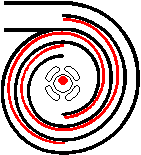
Function
The G-supercharger does not belong, as for example the Roots blower, to the category of centrifugal pumps, but works after the principle of a rotating displacement compressor. Screw channels are inserted in the
half-casings and on both sides of the displacement compressor. In the picture on top a half-casing with the inlet on top is visible. These both halves surround the displacement compressor with its bridges. A main
shaft and an auxiliary shaft, both featuring eccentrics, allow rotary movements (see picture completely on top). The air is carried from the outside by the spiral gears into the middle and resigns there.
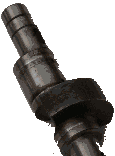 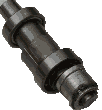 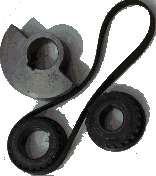
Once again the components which allow a movement of the displacement compressor. The shaft is connected in the middle (main shaft) via a small timing belt form-conclusively with the auxiliary shaft. The ball
bearings of the main shaft are connected with the lubricating oil cycle of the engine. The auxiliary shaft's bearing is outside, next to the casing (2nd picture from above - drilling to the left). Additionally, there is the
counterbalance on the main shaft which rotates with almost double the crankshaft speed.
  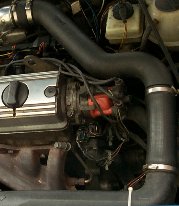
From the air filter on the left the pipe goes down to the G-supercharger which is driven by the engine via a belt drive. The pressure generated causes a temperature rise which is reduced in the intercooler (to the right
of it, hidden) by approx. 50°C or more. Subsequently we proceed further counter clockwise to the inlet side of the engine. In the lower speed range the air is partly guided via the bypass (via the engine) because of the
high charging volume to the inlet side of the G-supercharger.This process is controlled with a bypass flap which opens the path of the combustion air to the intake manifold of the G-supercharger. It opens as much as
possible according to the closing of the throttle valve, thus it is completely closed at full load.
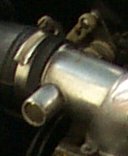
Materials
Both half-casings consist of aluminium. The displacement compressor consists of lighter magnesium because of its quick rotary movements.
Disadvantages
The single bridges of the spirals must be sealed towards the opposite wall. Neither the Roots blower nor the turbocharger have friction or sealing in the compression space. With the G-supercharger the sealing strips
in the spiral bridges of the displacement compressor and both half-casings have, in addition, also guiding functions. Even if the speed on the opposite wall is relatively low due to the relatively slight rotary movement,
bigger friction and thus breaking off might cause a complete breakdown of the system.
|